The secrets to stargazing from your backyard
How to search the sky and what to see, from moon and stars to planets and the International Space Station. Go on a journey of billions of miles from your garden
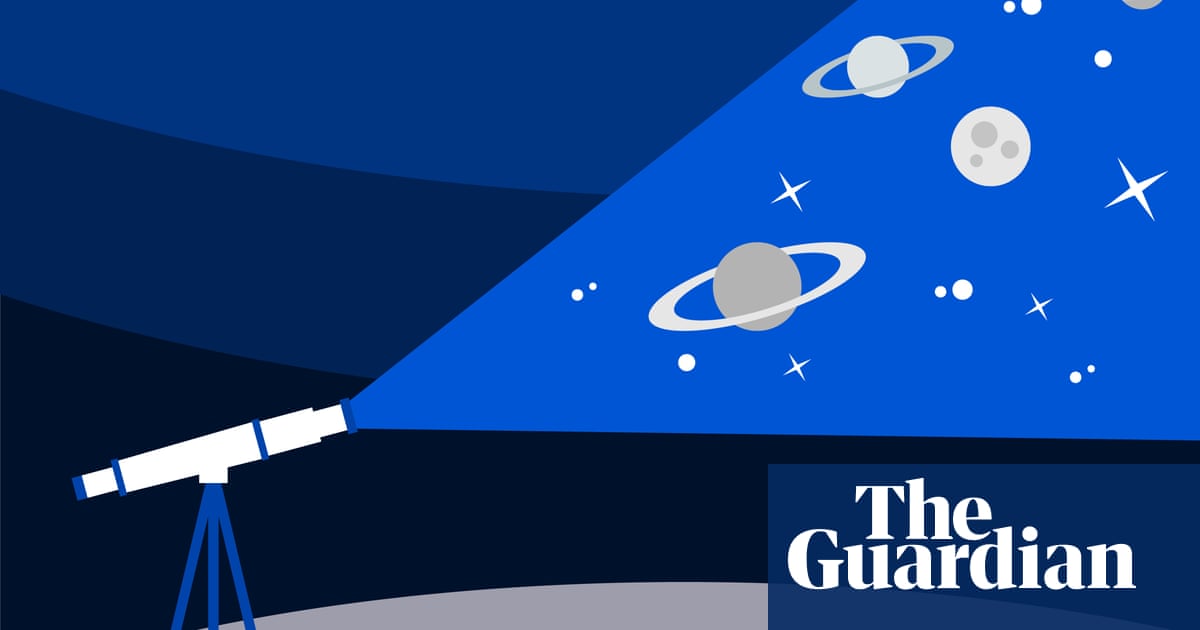
To begin looking for objects in the heavens, youll need to know where north, south, east and west are. Make a note of where the sun rises (east) and sets (west), use Google maps or use the compass on your phone. Now, download a free astronomy app to your phone AND computer. My favourite, for ease of use and features, is Stellarium .
Once the app is installed, set your location. This ensures that, when opened, the app indicates what is in the sky above you wherever you live in the world. Stellarium automatically sets the time and date but also has a function that speeds up time, so you can fast forward to night-time and explore the sky from your sofa. Its even possible to set it to show the sky on the night you were born.
Decide what you want to search for in the sky (such as star clusters, constellations, planets) and use Stellarium to find them virtually: this will tell you which direction they lie in, and how high up in the sky to look. Sky Map (Android) and Star Walk (iPhone) are free stargazing apps and provide the names of stars, constellations and planets if you point your phone at the sky. Both have a night view or red light option, which is useful once your eyes adjust to the dark.
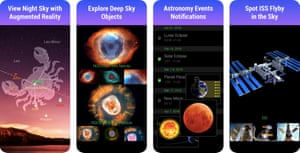
Stargazing from home doesnt always mean apps and laptops: you can see plenty with binoculars even a cheap pair. Sir Patrick Moore recommended 10×50 binoculars for astronomy as a good starting point and Ive been using a pair of these at Battlesteads Observatory for five years.
Ensure your eyes are dark adapted by turning off lights. Your eyes will start adapting immediately and that will improve over the next 30 minutes. If stargazing from inside through a window, ensure the area is free from clutter, turn off your lights and get comfortable. If in a yard or garden, turn off all the lights on that side of your house and turn off any outside lights too, being careful to make sure there are no trip hazards first. Whether you live in the light-polluted city or are blessed with dark skies youre ready.
The moon
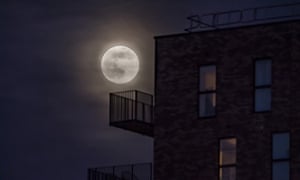
The moon is visible day and the night over the course of a month and on 7 May it will be a supermoon a little closer to us than normal and appearing around 10% bigger. Look at the moon with your naked eyes and notice the dark and light-grey patches. Light-grey areas are mountainous highlands; the dark grey are long-dried-up lava beds called seas because early astronomers took them for actual seas. If you look closely you can see a white circle (where the seven would be if the moon were a clock face) with rays of white pointing out from it. This is Tycho; a crater about as big as East Anglia. If you have any kind of binoculars old or even toy ones grab them and have a closer look at the moon. Youll see more detail around the craters and seas but have a look around the edge of the moon, too, and see its not a perfect circle. The rough, jagged outline is because of lunar mountain ranges.
The phase of the moon changes daily. The phase is how much of the moon is visible from Earth full, half and crescent, for example. The line between the light and dark side of the moon is called the terminator. Each night, look closely at the terminator and youll see different craters, valleys and mountain ranges as the line slowly moves across the surface.
Planets
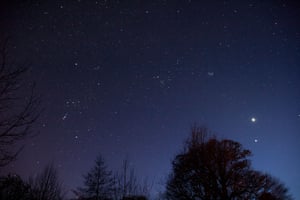
In the evening, Venus is a bright dot in the west. It shines brightly because the thick clouds that shroud it are reflecting sunlight towards us. If youve got binoculars to hand, or a small telescope, notice that Venus isnt a perfect circle either it has phases just like the moon.
In the east on pre-dawn mornings throughout April and May, Jupiter, Saturn and Mars line up as three incredibly bright colourful dots. Theyre all visible with the naked eye, though with binoculars Mars will look salmon pink, Saturn oval-shaped (because of the rings) and you may even see some of Jupiters moons.
On 4 July after 9.30pm, the Moon, Jupiter and Saturn will all be very close together in the sky, forming a conjunction, which is a rare event.
Constellations and stars
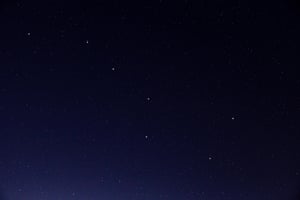
Constellations are official patterns of stars, and youll be familiar with some names and patterns. During April, Orion will be visible in the west after sunset. Recognisable by the three stars in a row that form his belt, this is one of my favourites because hanging from his belt is a sword containing another three stars and the middle star is a naked-eye visible nebula where baby stars are being born. Look at this with binoculars and you may spot a blurry smudge that some see as coloured turquoise.
Look north for the Plough (often called the Big Dipper). The second star on the handle of the Plough is a naked-eye double star. Look closely or use binoculars and youll be able to see them clearly even with high light pollution.
International Space Station

Orbiting the Earth, 250 miles up, is the International Space Station (ISS), home to (usually) six astronauts from around the world. You can easily spot it with the naked eye as it flies from west to east. Go to spotthestation.nasa.gov and enter your location to see when its due to fly over you.
Summertime noctilucent clouds
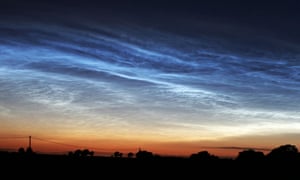
Astronomers hate clouds, but from May to July an eerie phenomenon, often mistaken for the aurora borealis, graces our skies. Noctilucent clouds are white/electric blue ice crystal clouds that form only in the summer, 50 miles up at the very edge of space. Sometimes seen about an hour after sunset, or an hour before sunrise, looking north, they are hauntingly beautiful and best observed with the naked eye.
Webcams and online observing
Even when its cloudy you can explore the universe. Here are some useful links:
Aurora Borealis: liveauroranetwork.com
ISS Live Stream: ustream.tv/channel/live-iss-stream+
Robotic telescope service Slooh does live streams and has a back catalogue of videos to watch on YouTube. For a small fee you can take control of one of its remote telescopes.
There are also several live all-sky cameras and telescopes. Some are more reliable than others: allskycam.com; eso.org; telescope.org
Roy Alexander is director of learning and lead astronomer at Astro Ventures as well as teaching classes and workshops at Battlesteads Observatory
Read more: https://www.theguardian.com/travel/2020/apr/23/the-secrets-to-stargazing-from-your-backyard
